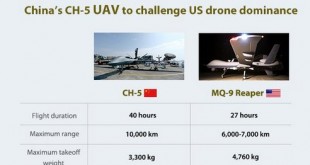In the fast-paced world of technological and scientific innovation, groundbreaking ideas often require bold funding models that embrace uncertainty and prioritize transformational impact over incremental progress. Enter the Advanced Research and Invention Agency (ARIA), a UK government initiative designed to fund “high-risk, high-reward” research, reminiscent of the U.S. Defense Advanced Research Projects Agency (DARPA). ARIA aims to stimulate disruptive innovation, driving progress in fields where conventional funding mechanisms may falter due to their aversion to risk.
ARIA vs. DARPA: A Comparative Analysis
ARIA draws inspiration from DARPA, the U.S. agency that has been a cornerstone of technological advancement since its inception in 1958. DARPA is credited with fostering innovations such as the Internet, GPS, and autonomous vehicles. While ARIA shares similarities with DARPA, there are distinct differences in scope and approach:
| Feature | ARIA | DARPA |
|---|---|---|
| Established | 2021 (UK) | 1958 (USA) |
| Budget | £800 million (4 years) | $4 billion (annual) |
| Mission | High-risk, high-reward research in any domain | Defense and national security innovations |
| Structure | Small, agile, and independent | Larger, with strong ties to military |
| Scope | Broader, covering societal and tech challenges | Primarily defense-related advancements |
ARIA’s broader scope allows it to tackle challenges beyond defense, addressing issues like climate change, energy security, and healthcare.
Challenges Facing ARIA
However, ARIA’s bold approach is not without challenges. Operating with minimal oversight and a high tolerance for failure may expose the agency to scrutiny regarding transparency and the effective use of public funds. Balancing its agile model with public accountability will be critical in maintaining trust and credibility. Additionally, fostering a cultural shift toward embracing risk and learning from failure is essential, as success hinges on stakeholders viewing setbacks as necessary steps toward innovation. Lastly, ARIA’s comparatively smaller budget requires strategic resource allocation to maximize impact. By carefully selecting high-potential projects, the agency can ensure meaningful advancements despite financial constraints.
Through thoughtful management of these opportunities and challenges, ARIA has the potential to become a cornerstone of future innovation ecosystems, delivering transformative solutions to complex global problems.
Looking Ahead: ARIA’s Role in Shaping the Future
As ARIA evolves, its success will be measured by its ability to foster breakthroughs that redefine industries and improve lives. By taking bold risks and supporting visionary thinkers, ARIA can position the UK as a global leader in innovation.
ARIA is not just a funding agency; it’s a catalyst for bold ideas, a laboratory for experimentation, and a blueprint for 21st-century innovation. Whether it achieves DARPA-like acclaim or carves its unique path, one thing is certain: ARIA is poised to be a game-changer in the world of research and invention.
Conclusion
ARIA represents a paradigm shift in how research is funded and executed in the UK. By prioritizing agility, risk-tolerance, and transformational impact, ARIA aims to unlock breakthroughs that can address humanity’s most pressing challenges. While comparisons to DARPA provide valuable context, ARIA’s broader scope and distinct operational model set it apart as a bold experiment in research funding. If successful, ARIA could serve as a model for innovation worldwide, redefining what is possible when risk meets vision.
 International Defense Security & Technology Your trusted Source for News, Research and Analysis
International Defense Security & Technology Your trusted Source for News, Research and Analysis
